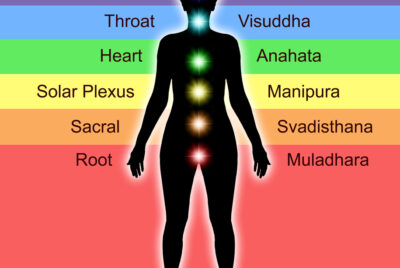What Are Chakras? The term "chakra" often conjures mystical or esoteric images, but the concept is…
Understanding Electromagnetic Fields (EMF) and Their Impact on Health

Introduction Electromagnetic fields (EMF) are invisible areas of energy, often referred to as EMF radiation, that are associated with the use of electrical power and various forms of natural and man-made lighting. In our increasingly technology-driven world, EMFs are ubiquitous, emanating from devices like cell phones, computers, Wi-Fi routers, and power lines. People who are highly sensitive to energy of all types often have unique problems when EMF sources starting affecting them.
This blog post aims to demystify EMFs, explore their potential health impacts, and discuss ways to mitigate exposure.
What is EMF? EMF is a broad term encompassing electromagnetic radiation types, from extremely low frequency (ELF) emissions to radiofrequency (RF) waves. EMFs are classified into two categories: non-ionizing and ionizing. Non-ionizing EMFs, found in cell phones, Wi-Fi routers, and microwaves, are low-level radiation considered less harmful. Conversely, ionizing EMFs, such as X-rays and UV rays, have higher frequencies with the potential to damage DNA and cells.
Health Research on EMF The health effects of EMF exposure have been a topic of research and debate for decades. Research primarily focuses on non-ionizing EMF, as ionizing EMF’s potential to cause harm, like skin burns and cancer, is well-established.
1. Cancer Risks: The most significant concern surrounding EMF exposure is the potential link to cancer. The International Agency for Research on Cancer (IARC) classified RF fields from cell phones as possibly carcinogenic to humans, based on limited evidence. However, many studies have found no conclusive links between EMF exposure and cancer risk.
2. Neurological Effects: Some studies suggest EMF exposure may affect brain activity and sleep patterns. However, these findings are not universally accepted in the scientific community, and more research is needed.
3. Reproductive Health: Concerns have also been raised about EMF’s impact on reproductive health. Some studies suggest a potential link between EMF exposure and reduced sperm quality, but this area requires further investigation.
Potential Benefits of EMF Despite concerns, EMFs are also harnessed for beneficial purposes. For instance, magnetic resonance imaging (MRI) uses EMF to produce detailed images of the inside of the body, aiding in medical diagnosis and treatment.
Reducing EMF Exposure Given the ongoing research and debate over EMF health impacts, many people choose to minimize their exposure. Here are some practical ways to do so:
1. Distance is Key: Increase the distance between yourself and EMF sources. For example, use speaker mode or earphones with cell phones to keep them away from your head.
2. Limit Use of Devices: Reduce time spent on devices emitting EMFs, like cell phones and laptops, especially before bedtime to avoid potential impacts on sleep.
3. EMF Shielding Products: Various products claim to block or reduce EMF exposure, such as:
• Phone Cases: Specialized phone cases are designed to limit exposure to cell phone radiation.
• EMF Shields for Laptops: These are pads or mats that can be placed underneath laptops to reduce EMF emissions.
• EMF Blocking Paints, Fabrics, and Devices: These can be used in homes and
offices to shield against external sources of EMF, like cell towers and power lines.
4. WiFi Router Placement: Keep WiFi routers in less frequented areas of the home and turn them off at night.
5. EMF Meters: These devices can measure EMF levels, helping you identify and mitigate high-exposure areas in your environment.
Conclusion While the scientific community continues to study the health impacts of EMF, understanding its nature and potential effects is crucial. By being informed and taking practical steps to reduce exposure, individuals can navigate the EMF landscape more safely. However, it’s important to balance caution with the recognition of EMF’s beneficial uses in technology and medicine. As research evolves, staying updated on findings and guidelines from health and regulatory organizations is advisable.
Disclaimer This blog post is for informational purposes only and is not a substitute for professional medical advice, diagnosis, or treatment. Always seek the advice of your physician or other qualified health providers with any questions you may have regarding a medical condition.



